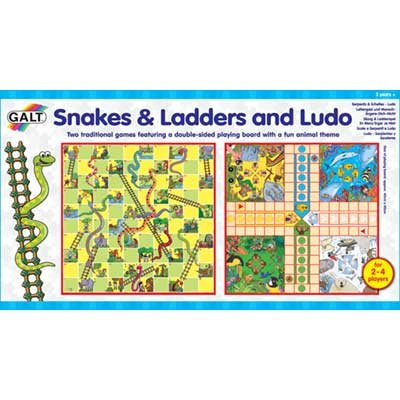I remember as a kid, board games were one of the most wanted Christmas gifts for my sister and me. We used to spend hours playing Snakes and Ladders and Ludo, to such a degree that the deck started changing color. When we used to visit our friends, we were amazed when we encountered a rich collection of board games, and I had curiosity about all of them. I wanted to open the boxes, to see the figures and learn about the narrative. I remember especially Dragons & Dungeons, which always caught my interest, but I never really understood how to play.

It is evident that a cultural shift has happened in the last decades, from a time when every household used to have a Monopoly, Scrabble, or UNO for rainy days and family nights, to the rise of video games and online streaming like Netflix. We used to enjoy slower forms of entertainment that enhanced communication, weirdly enough, through the fights that we had over the rules. In that place, we learned for the first time how loss is part of the game, and we experienced the joy of playing the same game again and again.
Board games haven’t died out, but they have lost their dominance in entertainment. They have shifted from a mass culture to a more niche one. The hobby is still alive as it offers an escape from screens and increases face-to-face engagement.
So, where in the World are the Board Games?
Some of them are dusty and forgotten in a closet or a cupboard. Some are still used when friends meet, some could be in cafés, and others are on your digital device. Board game apps (Everdell, Wingspan), online platforms like Board Game Area, and the use of social media spread the word for reviews, events, and bring together common-minded enthusiasts. In the digital era, board games seem to have been adapted and have combined digital culture with analog play.
https://medium.com/@bennett.olivia/the-rise-of-board-games-in-the-digital-age-0c947cfa418f
https://boardgamegeek.com/blog/10203/blogpost/171119/top-ten-board-game-apps


This is interesting as I think about board games in relation to my life. I always wondered when I would start to get a board game collection, meaning myself purposefully, not ones I just inherited or have back with my parents. But now I realize how rare it is to think of gifting a board game or to recieve a board game and that makes me a bit sad. I think for families and children it is a little bit more of a common practice, but with how many have become digital I worry they will not be common when I have kids. ( Not that this is necessarily all bad, I do appreciate the ability to play Rumikub with my friend while across the world.) Maybe I should start collecting my favorites now before they become massive collectors items? Or is it something that will always come back in style in some way? I hope so, but for now i’ll remember to go play some board games when i’m looking for a fun activity.
I really like the angle of talking about board games as it was a big part of my childhood as well; and my family might be a bit of an odd one out, but we still play a lot of board games on birthdays and holidays. In your last paragraph you talk about board game apps and how they’re digitalized which I think is a positive development. As most people have a busy schedule and don’t always live close to their friends, these apps are actually really useful to still be able to play board games (even if the rounds may take a little longer as you wait for a friend to play their turn during the day). I never really thought about this change that much and that board games now count as digital media as well, and I can’t wait for some of my favorite games become available through apps.
Yes, I could not agree more with your blog post. I LOVE board games and no one seems to care about them anymore. I don’t know when exactly everyone shifted away form them but they are so important for bonding as friends and as family. Even though board game cafes are trying to bring back the popularity of board games, this still is not enough to combat video games and streaming platforms which replaced them. It’s so interesting that so many board games have online versions too, it makes me question whether the issue is the game or the fact you actually have to interact with people in real life to play?
Love this post! As someone obsessed with 2000-piece puzzles and board games, I can’t imagine a world without them. There’s something about the tactile, slow-paced challenge and the pieces, the strategy, even the arguments over rules, that screens just can’t replicate. I love that board games are going digital cause you can play anytime, anywhere, with anyone, but I hope they never fully replace gathering around a table and experiencing the game with others in real life.